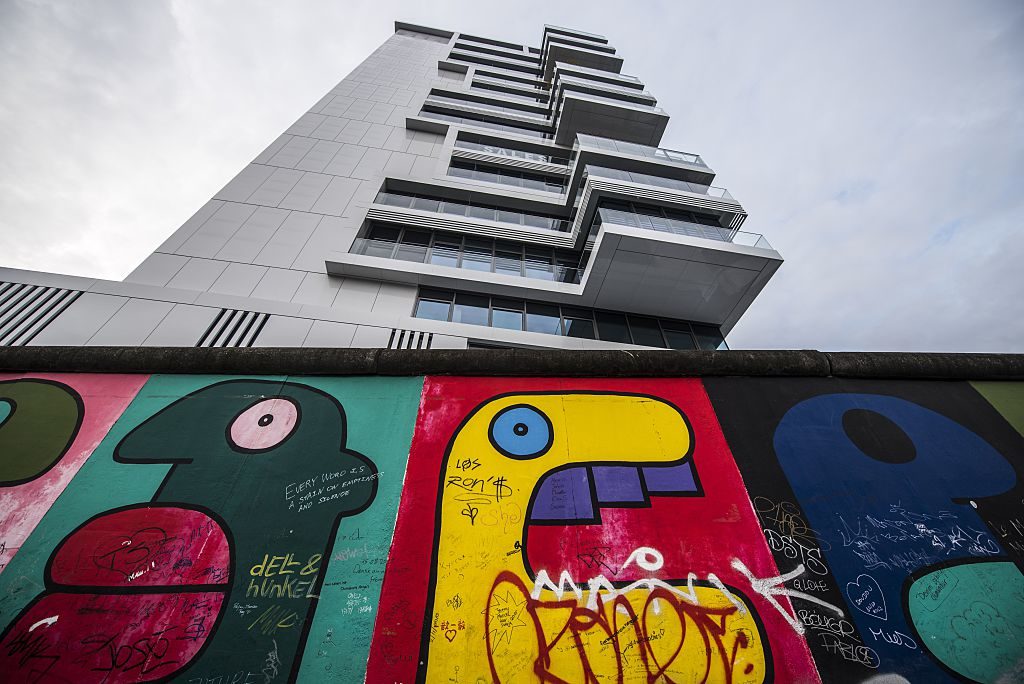Politics
An Art-Covered Stretch of the Berlin Wall Has Now Been Saved From Encroaching Real Estate Developers
In 1990, over 100 artists and street artists decorated the important piece of German history.

In 1990, over 100 artists and street artists decorated the important piece of German history.

Kate Brown

It’s probably the brightest wall in Berlin, but it marks a dark past. An art-covered stretch of the Berlin Wall has just gained protected status after real estate developers threatened to close in on the historic monument.
Popular with tourists, the colorful three-quarters of a mile section of the wall that divided the German capital from 1961 to 1989 is known as the East Side Gallery. This month, the Berlin Wall Foundation, which runs other memorials to the wall throughout the city, took control of the site, bringing a halt to further real estate development around it.
In 1990, after the wall came down, 118 artists decorated the longest remaining segment of the former divider. Today the site welcomes around three million visitors per year though, until now, there was no professional organization officially running or maintaining it.
Property developers have been converging on the booming metropolis over the last decade. The city now has the fastest growing real estate property prices in the world (prices ballooned by 20.5 percent last year). The East Side Gallery is particularly vulnerable given its central location on the border of two very popular neighborhoods, and its waterfront view. The desirable area has become a particular hotbed for luxury condos. In 2013, one section of the wall was even removed to make way for one of these luxury developments, despite protests.
It took years of negotiations to finally settle on who should take responsibility for the landmark. The director of the Berlin Wall Foundation, Axel Klausmeier, has guaranteed that no further segments of the wall will be removed. The Foundation also manages the city’s main wall memorial in the neighborhood of Mitte, which focuses on the political strife and oppression that citizens suffered while living in the divided city. The East Side Gallery will be different, however. Klausmeier says it should be a “symbol of joy.”
Several of the works painted on the wall in 1990 have become well-known fixtures of the city. French street artist Thierry Noir’s cartoon heads are thought to be the first graffiti ever to have been done to the structure, which used to span over 87 miles. And people flock to take their selfies in front of Russian artist Dmitri Vrubel’s My God, Help Me to Survive This Deadly Love, which features an East German and a Soviet politician locked in a fraternal embrace.
Berlin will contribute €250,000 ($285,000) to assist in preserving the monument, and an educational program of guided tours and didactic panels as well as an artistic memorial are in the works. In addition, an exhibition on the site’s history is being planned.